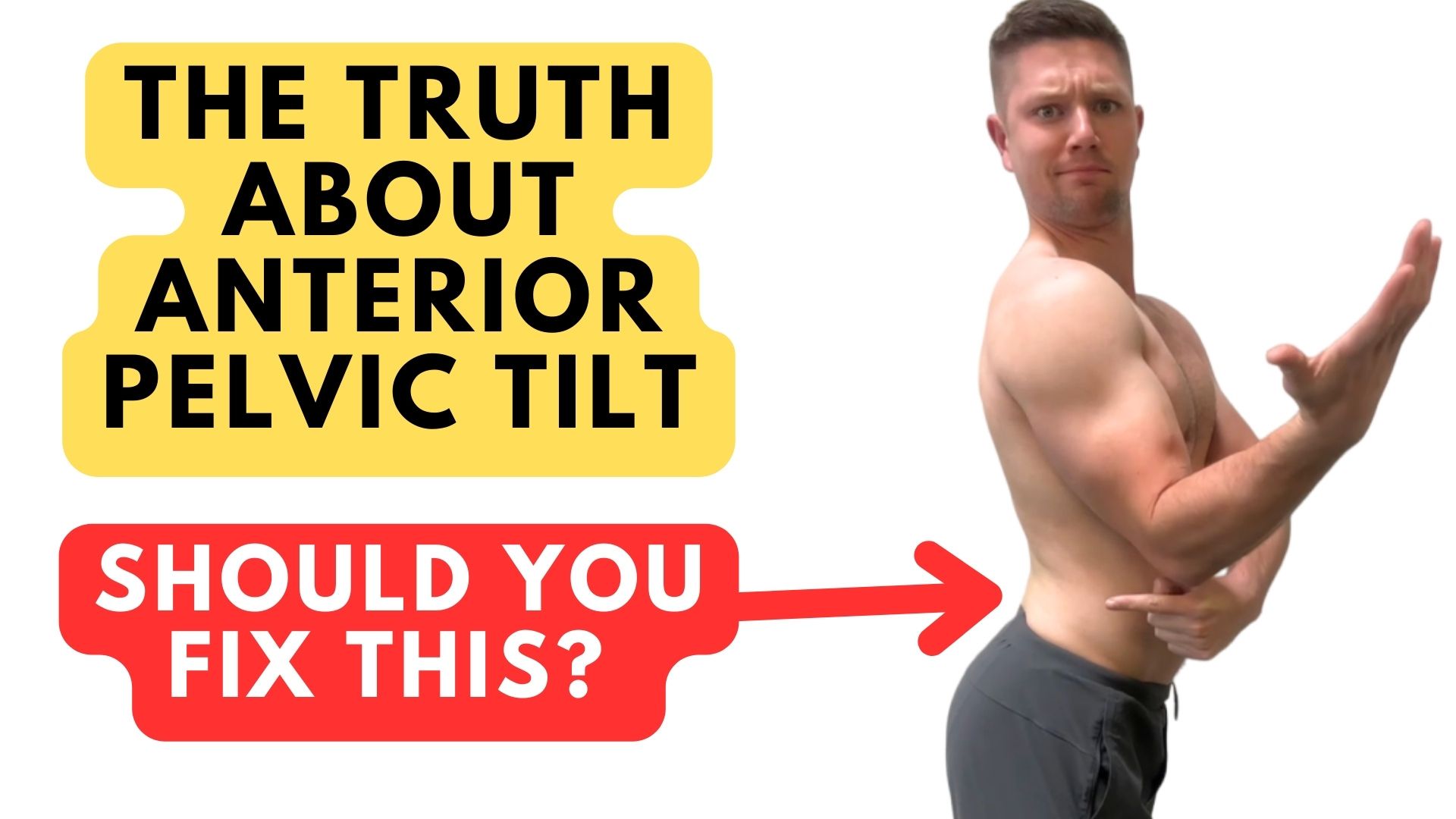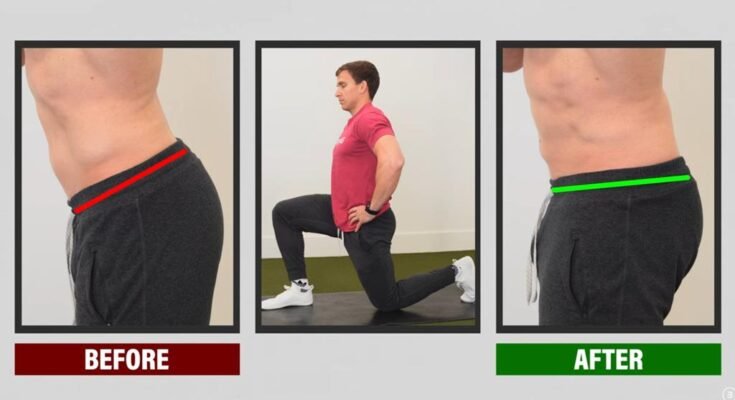Anterior pelvic tilt can cause discomfort and affect posture. Fixing it involves specific exercises and lifestyle changes.
An anterior pelvic tilt occurs when the front of the pelvis tilts downward, causing the lower back to arch excessively. This condition can lead to pain and muscle imbalances. If you spend a lot of time sitting or have weak abdominal muscles, you might be at risk.
Fortunately, there are ways to correct this issue. In this blog, we will explore effective methods to fix an anterior pelvic tilt. Understanding how to address this problem can help improve your posture and reduce discomfort. Let’s dive into the steps and exercises that can make a real difference.

What Is Anterior Pelvic Tilt
People may notice a curved lower back. Often, the hips feel tight. There can be discomfort in the lower back. Stiffness in the hip area is common. Poor posture may be seen. Difficulty standing straight sometimes occurs. Pain may arise during certain movements. Walking might feel awkward. Sitting for long periods can be uncomfortable. Some may feel muscle weakness.
Muscle imbalance is a key reason. Weak abdominal muscles can lead to this tilt. Tight hip flexors often contribute. Sedentary lifestyle may worsen the condition. Sitting too much affects muscle balance. Lack of exercise can be a factor. Genetics might play a role. Improper posture habits are common causes. Overuse of certain muscles can lead to tilt. Poor body mechanics during activities may contribute.
Diagnosis
Doctors first look at your posture. They check your spine and hips. They may ask you to stand or walk. This helps them see how you move. They might feel your muscles. This checks for tightness or weakness. Each step helps to find the tilt.
X-rays and MRIs show your bones and muscles. These images help doctors see inside your body. They look for changes in your spine and pelvis. These techniques help find the exact problem. This makes treatment easier and more accurate.
Corrective Exercises
Stretching exercises can help with an anterior pelvic tilt. Focus on the hip flexors and lower back muscles. These areas are often tight. Perform a hip flexor stretch. This can be done by kneeling on one knee. Push your hips forward and feel the stretch. Hold for 30 seconds. Repeat on the other side. Another good stretch is the child’s pose. Kneel on the floor. Sit back on your heels and extend your arms forward. Hold for 30 seconds.
Strengthening exercises are key to correcting an anterior pelvic tilt. Focus on the glutes and hamstrings. These muscles are often weak. Perform glute bridges. Lie on your back with knees bent. Lift your hips towards the ceiling. Hold for a few seconds. Lower back down. Do 10-15 reps. Another exercise is the plank. Get into a push-up position. Hold your body straight. Engage your core. Hold for 20-30 seconds.
Posture Adjustments
Stand tall and keep your shoulders back. Relax your knees. Do not lock them. Try to align your hips with your shoulders. Keep your weight evenly distributed on both feet. Avoid leaning forward or backward. Engage your core muscles to support your lower back. Practice daily to improve your standing posture.
Sit with your back straight. Place your feet flat on the floor. Avoid crossing your legs. Keep your knees at a right angle. Use a chair that supports your lower back. Adjust your desk height. Keep your screen at eye level. Take breaks to stretch and move. Practice good habits daily for better posture.
Daily Habits
Strengthening your core and glutes can help correct an anterior pelvic tilt. Stretching hip flexors daily also aids in realignment. Maintaining proper posture throughout the day is crucial for lasting improvement.
Workstation Setup
Make sure your workstation is set up correctly. The screen should be at eye level. Keep your back straight. Feet flat on the floor. Use a chair that supports your lower back. Avoid crossing your legs. Take breaks often. Stand up and stretch every hour. Simple adjustments can make a big difference.
Sleep Position
Proper sleep position helps fix pelvic tilt. Sleep on your back. Place a pillow under your knees. This keeps your spine in a neutral position. Avoid sleeping on your stomach. It strains your back and hips. Choose a firm mattress. It supports your spine better. Small changes can lead to big improvements.

Professional Treatments
Physical therapy helps in correcting an anterior pelvic tilt. Therapists give exercises to strengthen the muscles. Stretching tight muscles is also part of the therapy. Regular sessions with a therapist are important. They also teach proper posture habits. Consistency in exercises is key. Improvement can be seen over time. Physical therapy is a safe option.
Chiropractors can help with pelvic tilt issues. They adjust the spine to correct posture. Regular visits may be needed for adjustments. Chiropractors also recommend exercises. Proper alignment of the body is their goal. Chiropractic care can reduce pain. It also improves mobility. Many people find relief through chiropractic care.
Preventive Measures
Exercise helps to strengthen muscles. Strong muscles support the pelvis. Stretching improves flexibility. Yoga can help balance the body. Pilates is good for core strength. Simple leg raises can be effective. Squats build leg and hip strength. Lunges help stabilize the pelvis. Planks strengthen the core. Consistency is key for improvement.
Good shoes support your feet. Proper arch support is important. Flat shoes can cause problems. High heels may worsen the tilt. Orthotic insoles can help. Comfortable shoes are better for daily use. Running shoes with good support are ideal. Shoes with cushioning reduce stress on the pelvis. Choose shoes that fit well and feel good.

Long-term Management
Sticking to a daily routine is key. Regular exercise helps correct the tilt. Stretching tight muscles can ease discomfort. Strengthening weak muscles is important. Set reminders to maintain good posture. Small changes add up over time.
Keep a journal to track your improvements. Note how you feel each day. Record exercises and stretches you do. Take photos to see your progress. Celebrate small victories. This keeps you motivated.
Frequently Asked Questions
Can Anterior Pelvic Tilt Be Corrected?
Yes, anterior pelvic tilt can be corrected. Consistent exercises, stretches, and proper posture help improve alignment. Consulting a physical therapist can provide personalized guidance.
What Is The Root Cause Of Anterior Pelvic Tilt?
Weak core muscles and tight hip flexors often cause anterior pelvic tilt. Poor posture and prolonged sitting contribute too.
Do Weak Glutes Cause Anterior Pelvic Tilt?
Weak glutes can contribute to anterior pelvic tilt. Strengthening glutes may help correct posture. Proper exercises can improve muscle balance. Maintaining a balanced workout routine is crucial for posture health. Consult a professional for tailored advice.
How Can I Fix My Pelvic Tilt Fast?
To fix pelvic tilt fast, strengthen your core and glutes, stretch hip flexors, and practice proper posture regularly.
Conclusion
Fixing anterior pelvic tilt takes commitment and consistent effort. Start with simple exercises. Focus on stretching hip flexors and strengthening glutes. Maintain good posture throughout daily activities. Listen to your body. Avoid straining yourself. Progress at your own pace. Patience is key.
Seek guidance if needed. A physical therapist can help. Monitor your improvements. Celebrate small wins. Keep practicing regularly. Remember, consistency is crucial for long-term results. Achieving a balanced posture enhances your well-being. You’ll feel more comfortable and confident. Make these changes part of your routine.
Embrace a healthier lifestyle. Your body will thank you.



